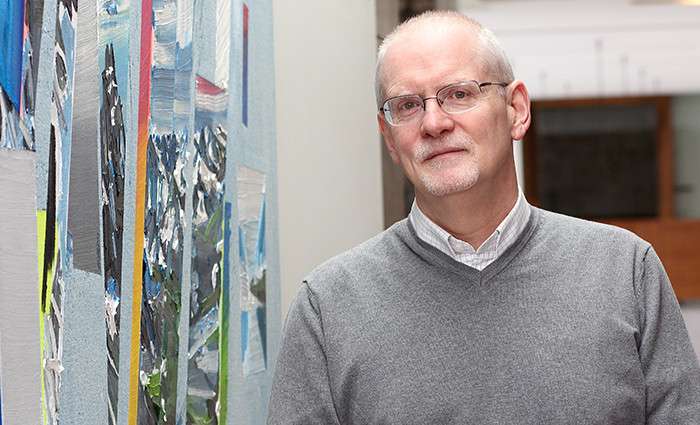Greenhouse gas reductions 'not an easy road'

If any real progress is to be made in meeting the country's ambitious 2030 greenhouse gas emissions target, Canadian policy-makers need to tackle immediately the sensitive question of how to share the burden, according to an Ivey Business School professor.
Set at the UN Paris Climate Conference in December, the Canadian government pledged to reduce its greenhouse gas emissions by 30 per cent below 2005 levels by 2030. That is a lofty goal given the fact Canada is not on track to meet its 2020 target of reducing greenhouse gas emissions by 17 per cent.
In fact, the country's greenhouse gas emissions have risen between 2009 and 2013.
"I wouldn't say I'm optimistic; I'm realistic about this," said Ivey professor Paul Boothe, Director of the Lawrence National Centre for Policy and Management and former Deputy Minister of the Environment.
There is actually a lot of consensus among policy-makers on a number of critical issues related to climate change and greenhouse gas reductions. Where the consensus breaks down, however, is over how to share the burden of the reduction, Boothe stressed. This has been the main point of failure on the issue for the last few decades.
Under the Canadian Constitution, environmental stewardship is a shared responsibility of the federal and provincial governments.
In a recent paper, Sharing the Burden: Canadian GHG Emissions, Boothe and Felix Boudreault, a Lawrence Centre fellow, used Canada's 2020 emissions target to show three alternative approaches to burden sharing:
- Egalitarian – reductions based on equal per capita shares of national emissions among the provinces;
- Historical – reductions based on historical provincial/territorial shares of national emissions; and
- Efficiency – reductions based on shares of emissions reductions implied by the application of a national carbon price sufficient to achieve a given target.
Boothe's research found no clear path to success. No single approach of sharing the burden to reduce greenhouse gases dominated the other as the go-to solution. Each were flawed; each had advantages. The report called a hybrid of two approaches – Historical and Efficiency – "both interesting and promising."
However, while the approaches differ, the implications do not, Boothe noted. We must cut – quickly and seriously. And compromise, he said, will be key.
"It's easy to talk about it in terms of cutting our emissions, but what we really have to do is transform our economies and transform our societies to become low carbon," he said. "If you think the answer is we all go to bed and when the sun goes down we only ride bikes, that's not the answer.
"Our view was there was really no kind of unambiguous way to say one view is better than the other. Having been involved in these kind of discussions on a practical basis, you can either say let's give up because we just can't agree, or you can say the philosophical underpinnings of these things are quite different, but are they really different in practice?"
The hard work of negotiating a federal-provincial collaboration is just beginning.
Ontario Premier Kathleen Wynne recently announced a Cap and Trade Program, providing a range of options to reduce greenhouse gas emissions, such as a 4.3 cent increase in gasoline prices and $5 per month increase in home heating costs.
Prime Minster Justin Trudeau announced last week a pair of initiatives to reduce emissions, with the Federation of Canadian Municipalities receiving $75 million to help local governments reduce emissions and build climate resiliency at the municipal-level, along with $50 million to improve building and infrastructures codes across Canada.
"Even if we have different views about what's the best way to do this, in practice we're not very far apart and, if that's the case, then the likelihood of being able to reach some consensus on how to do this is improved," he said. "You don't have to agree with my philosophy, I don't have to agree with yours, but if we're willing to make a relatively small compromise, then we have something to work with."
Boothe added there are already examples of federal and provincial collaborations on environmental issues, such as air pollution, wastewater pollution and coal-fired electricity regulations. The idea both governments could collaborate on carbon pricing is not far fetched.
Despite Canada most like failing to meet its 2020 greenhouse gas emission goals, Boothe feels confident in the possibility of meeting 2030 goals.
"We have 15 years. Can we meet 2030? Yes. But we need to get going right now and we need to be ambitious in the kind of things we do to transform our economies," he said. "You have to persuade the public, as well, that they need to take some action. It's not an easy road. But is it doable? Absolutely, it's doable."
More information: Sharing the Burden: Canadian GHG Emissions: www.ivey.uwo.ca/cmsmedia/21696 … aring-the-burden.pdf
Provided by University of Western Ontario















